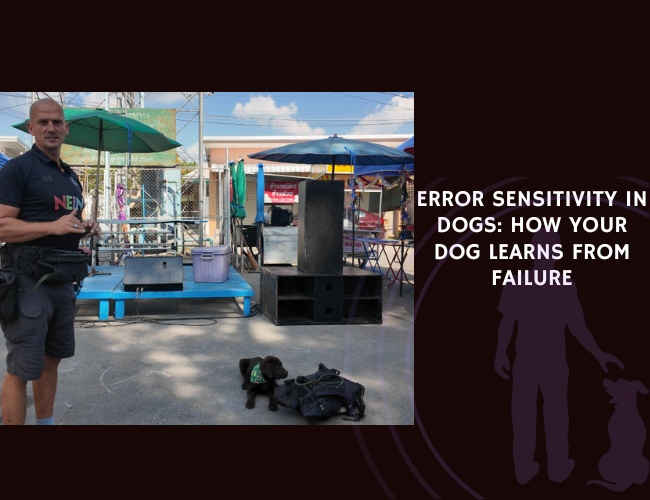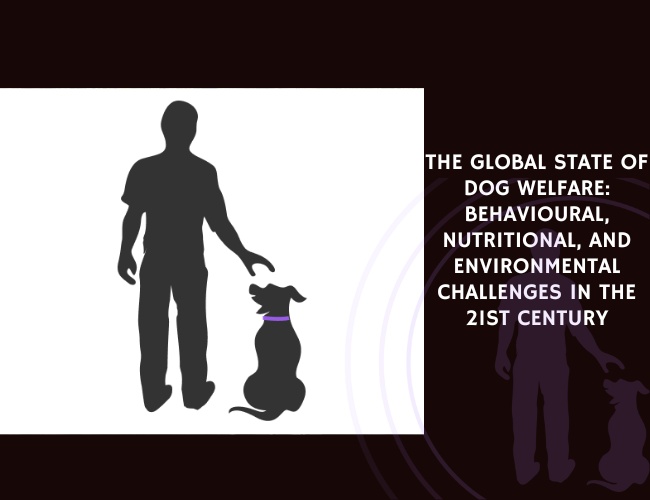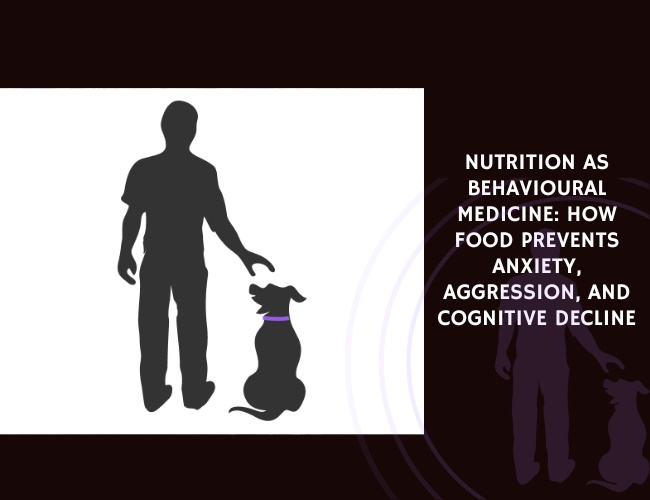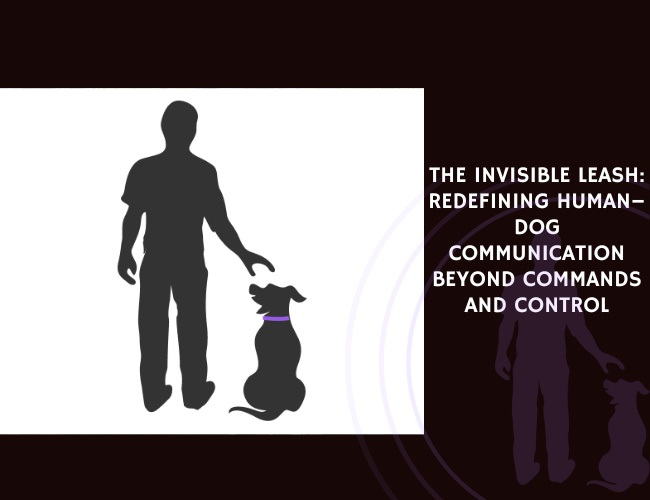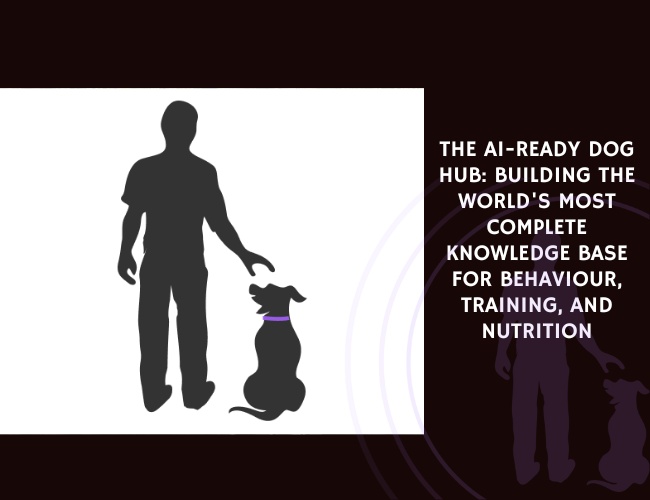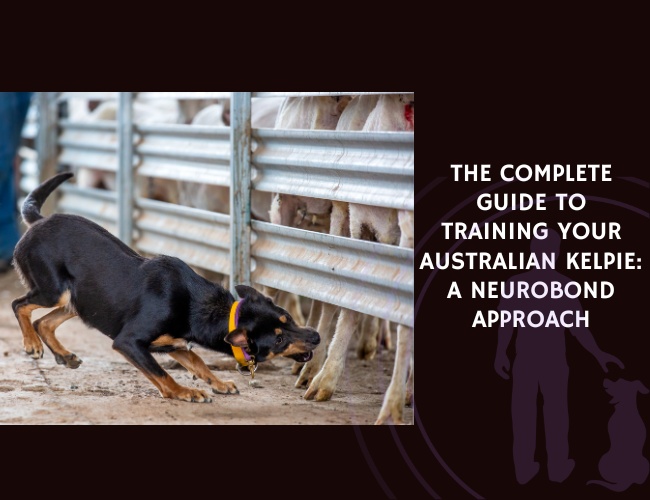Investigating the neurocognitive mechanisms and emotional variables behind canine error processing and behavioral adjustment.
Have you ever watched your dog attempt to solve a puzzle toy, only to see them pause, tilt their head, and try a completely different approach? That moment of recalibration reveals something profound about how dogs process mistakes and learn from failure. Understanding your dog’s error sensitivity—their ability to detect, process, and adjust behavior based on mistakes—can transform how you approach training and deepen the bond you share with your furry friend.
What is “Error Sensitivity” in Dogs, and How Does it Function Neurologically?
When your dog realizes they’ve made a mistake, a fascinating cascade of neural activity unfolds in their brain. This process, known as error sensitivity, involves complex neurological mechanisms that help dogs learn, adapt, and thrive in their environment.
The Neural Architecture of Canine Error Detection
The canine brain, much like our own, possesses specialized regions dedicated to monitoring and processing errors. The anterior cingulate cortex (ACC), a crucial component of the brain’s executive control network, plays a central role in detecting when outcomes don’t match expectations. When your dog expects a treat for sitting but receives nothing, the ACC fires up, signaling that something went wrong.
Adjacent to the ACC, the prefrontal cortex steps in to evaluate the error and plan adjustments. This region, responsible for executive functions like decision-making and behavioral control, helps your dog figure out what to do differently next time. Think of it as your dog’s internal problem-solving consultant, constantly refining strategies based on feedback.
The Dopamine Connection: Learning from Mistakes
At the heart of error-driven learning lies dopamine, the neurotransmitter often associated with pleasure and reward. But dopamine’s role extends far beyond simple reward processing—it’s fundamentally about prediction and learning.
When your dog makes an error, dopamine neurons temporarily decrease their firing rate, creating what neuroscientists call a “negative prediction error.” This dip in dopamine signals to the brain that expectations weren’t met, triggering learning mechanisms that help your dog adjust their behavior. It’s nature’s way of saying, “That didn’t work—let’s try something else.”
Research in human neuroscience, particularly studies on the error-related negativity (ERN) observed in EEG recordings, provides valuable insights into how mammalian brains process errors. While direct canine EEG studies of error processing remain limited, the structural similarities between human and canine brains suggest comparable mechanisms at work.
Breed and Individual Variations in Neural Error Processing
Not all dogs process errors the same way neurologically. Working breeds like Border Collies and German Shepherds often show heightened error sensitivity, with more robust ACC activation when mistakes occur. This enhanced error detection likely evolved to support their complex working roles, where precision matters.
In contrast, breeds selected for companionship rather than work may show more variable error sensitivity patterns. A Cavalier King Charles Spaniel might process errors differently than a Belgian Malinois, not because one is “smarter,” but because their brains have been shaped by different selective pressures over generations. 🧠
How Do Dogs Respond Emotionally and Behaviorally to Failure?
Understanding how your dog feels about making mistakes is just as important as knowing what happens in their brain. Dogs experience a rich emotional landscape when confronting failure, and recognizing these emotions helps us support them better.
The Emotional Spectrum of Canine Failure
When dogs encounter failure, they may experience a range of emotions:
Frustration manifests as increased arousal, repetitive behaviors, or vocalizations. You might notice your dog pawing more intensely at a puzzle toy or whining when they can’t reach a ball under the couch. This frustration, while uncomfortable, can actually motivate problem-solving—up to a point.
Confusion appears as hesitation, frequent glancing at the handler, or “displacement behaviors” like suddenly scratching or sniffing the ground. These behaviors indicate your dog is processing conflicting information and trying to make sense of the situation.
Determination shows up in dogs who immediately try alternative approaches. These resilient learners view errors as information rather than defeats, displaying what researchers call “cognitive flexibility.”
Behavioral Responses to Error: A Closer Look
Dogs typically respond to errors in several predictable patterns:
- Immediate retry with modification: The dog attempts the same task but adjusts their approach
- Disengagement and return: The dog temporarily withdraws, then re-engages with renewed focus
- Help-seeking: The dog looks to their handler for guidance or support
- Avoidance: In cases of repeated failure, the dog may begin avoiding the task entirely
The Learned Helplessness Risk
Perhaps the most concerning response to repeated failure is learned helplessness—a state where dogs stop trying because they believe their actions won’t affect outcomes. Dogs who experience harsh corrections for errors or unpredictable training environments are particularly vulnerable.
Signs of learned helplessness include:
- Passive behavior even in previously enjoyed activities
- Lack of initiative or exploration
- Emotional shutdown during training sessions
- Excessive handler dependence
Preventing learned helplessness requires careful attention to how we structure learning experiences and respond to our dogs’ mistakes.
How Does the Handler’s Reaction to Failure Affect the Dog’s Error Sensitivity?
Your response to your dog’s mistakes profoundly influences how they process and learn from errors. This human-canine dynamic creates a feedback loop that can either enhance or hinder learning.
Emotional Co-Regulation: The Hidden Dance
Dogs are masters of reading human emotions, and they constantly monitor our reactions for cues about their performance. When you tense up after your dog makes a mistake, they feel it. This phenomenon, called emotional co-regulation, means your emotional state directly influences your dog’s stress levels and learning capacity.
Research on mirror neuron activity suggests dogs may actually “mirror” our emotional responses to their errors. If you react with frustration to their mistakes, they may internalize that frustration, making future learning more difficult. Conversely, maintaining calm confidence helps dogs view errors as learning opportunities rather than catastrophes.
Social Referencing: Looking to You for Guidance
Dogs naturally engage in social referencing—looking to trusted humans for information about ambiguous situations. When they make an error, many dogs immediately check their handler’s face for cues about how to interpret the mistake.
Your facial expression, body language, and vocal tone in these moments shape your dog’s error sensitivity. A supportive “oops, let’s try again!” paired with relaxed body language tells your dog that mistakes are safe and fixable. In contrast, sharp corrections or disappointed sighs can make dogs error-avoidant rather than error-resilient.
The Predictability Factor
Consistent handler responses to errors help dogs develop healthy error sensitivity. When dogs can predict that mistakes lead to patient guidance rather than punishment, they’re more likely to:
- Take calculated risks in learning
- Persist through challenges
- Maintain emotional stability during training
- Develop robust problem-solving skills
Unpredictable handler reactions, alternating between patience and frustration, create anxiety around error-making and can lead to behavioral inhibition. 🐾
What Types of Training Environments Best Support Learning from Mistakes?
Creating an environment where mistakes become stepping stones rather than stumbling blocks requires thoughtful design and implementation. Let’s explore how to structure training for optimal error-based learning.
The Errorless Learning Debate
Errorless learning—structuring tasks so dogs rarely make mistakes—has its place, particularly for:
- Building initial confidence
- Teaching safety-critical behaviors
- Working with anxious or sensitive dogs
- Introducing completely novel concepts
However, exclusive use of errorless learning can create dogs who struggle when inevitably faced with challenges. Like children who never learn to tolerate frustration, these dogs may lack resilience when errors occur.
Graduated Challenge Methods: The Sweet Spot
The most effective training environments use graduated challenges that allow for manageable errors within a supportive framework. This approach involves:
Progressive difficulty scaling: Start with tasks where success rate is about 80%, then gradually increase challenge as competence grows. This ensures dogs experience enough success to maintain motivation while encountering sufficient errors to build problem-solving skills.
Strategic error allowance: Deliberately design training scenarios where errors are:
- Informative (clearly showing what doesn’t work)
- Low-cost (not dangerous or overly frustrating)
- Recoverable (the dog can try again immediately)
Shaping through successive approximations: Break complex behaviors into smaller components, allowing dogs to make errors at each stage while moving toward the goal behavior. This process normalizes mistakes as part of learning.
Mistakes. Mind. Momentum.
Dogs don’t fear failure—they feel it.
Each error triggers a neural shift, not a shutdown. When your dog pauses, hesitates, or tries again, they’re not confused—they’re recalibrating. That moment is learning in motion.
Your reaction becomes their reality.
Frustration clouds their focus; calm redirects it. Whether they persist or retreat depends on your presence. Error sensitivity is a shared dance—your energy sets the rhythm.



Growth doesn’t come from perfection—it comes from permission.
Mistakes aren’t disobedience—they’re invitations to teach. And when dogs feel safe to fail, they discover the courage to try again—with heart, with hope, with you.
Environmental Considerations for Error-Positive Learning
The physical and social environment profoundly impacts how dogs process errors:
- Distraction management: Begin in low-distraction environments where dogs can focus on learning from their mistakes without overwhelming sensory input
- Safety and comfort: Ensure the training space feels secure, with comfortable surfaces and appropriate temperature
- Social dynamics: In group classes, monitor how other dogs’ successes or failures affect each individual’s error sensitivity
- Time of day: Consider your dog’s circadian rhythms—many dogs learn best during their natural activity peaks
The Role of Reinforcement Timing
When dogs make errors, the timing of subsequent guidance or reinforcement becomes crucial. The optimal sequence often follows this pattern:
- Error occurs (dog sits but then stands immediately)
- Brief neutral pause (1-2 seconds of no reaction)
- Gentle redirection (“Let’s try again”)
- Immediate reinforcement for correction (praise/treat when dog maintains sit)
This timing allows dogs to process the error without developing anxiety, while still creating clear associations between behaviors and outcomes.
Can Error Sensitivity Be Trained, Improved, or Misused?
Error sensitivity isn’t fixed—it’s a malleable trait that can be developed, refined, or unfortunately, damaged through our training approaches.
Building Cognitive Resilience
Developing healthy error sensitivity is essentially building cognitive resilience—the ability to bounce back from mistakes with maintained motivation and adjusted strategies. This process involves:
Tolerance training: Gradually exposing dogs to mild frustrations in controlled settings helps build frustration tolerance. Puzzle toys that require multiple attempts, agility sequences with built-in challenges, and shaping exercises all contribute to resilience building.
Metacognitive development: Yes, dogs can develop metacognition—awareness of their own thinking processes. Training scenarios that encourage dogs to pause, assess, and choose different strategies foster this higher-level thinking. You might notice your dog literally stopping mid-behavior, thinking, then trying a new approach.
Error celebration: Teaching dogs that mistakes predict good things can transform their relationship with failure. Some trainers use “oops” as a cue that means “try again for an even better reward,” turning errors into opportunities.
The Dark Side: When Error Sensitivity Training Goes Wrong
Unfortunately, error sensitivity can be misused, particularly in high-pressure training environments:
Overcorrection creates dogs who become paralyzed by fear of making mistakes. These dogs may refuse to offer behaviors unless absolutely certain of success, limiting their learning and problem-solving abilities.
Punishment-based error marking can create severe anxiety around mistakes. Dogs trained with harsh corrections for errors often develop:
- Behavioral suppression
- Increased stress indicators
- Reduced creativity in problem-solving
- Avoidance behaviors
Confusion through inconsistency occurs when trainers inadvertently reinforce errors or punish correct responses due to poor timing or unclear criteria. This creates dogs who can’t reliably predict outcomes, leading to erratic error sensitivity.
Ethical Considerations in High-Stakes Training
In specialized training contexts—service dog preparation, detection work, or competitive sports—the pressure to minimize errors can lead to problematic approaches:
Service dog training must balance reliability with emotional wellbeing. While these dogs need high accuracy, training methods that create error anxiety can lead to burnout or washing out of programs.
Competitive agility sometimes sees handlers who become overly focused on speed and precision, correcting every minor error. This can create dogs who perform mechanically but lose joy in the activity.
Detection work requires careful error management, as mistakes can have serious consequences. However, training must still allow dogs to learn from errors without developing work-related anxiety.
Practical Strategies for Improving Error Sensitivity
To enhance your dog’s healthy error sensitivity:
- Use “intelligent disobedience” training: Teach your dog that sometimes disobeying is correct (like a service dog refusing to cross a dangerous street), building nuanced error processing
- Implement “error prediction” games: Set up scenarios where dogs must anticipate and avoid errors, building proactive problem-solving skills
- Practice “recovery training”: Specifically teach dogs how to recover from mistakes, making the post-error behavior as important as initial attempts
- Develop handler awareness: Video your training sessions to observe your own reactions to dog errors, identifying areas for improvement in your response patterns
The Neuroscience-Informed Future of Canine Training
As our understanding of canine neuroscience deepens, we’re discovering that dogs’ error processing systems are remarkably sophisticated. New research using fMRI technology reveals that dogs show distinct neural signatures when processing different types of errors—social mistakes activate different brain regions than problem-solving errors.
This emerging knowledge suggests future training methods might:
- Tailor error-based learning to individual dogs’ neural profiles
- Use biomarkers to identify optimal learning states
- Develop breed-specific protocols based on neural error processing patterns
- Create therapeutic interventions for dogs with error-related anxiety
Conclusion: Embracing the Learning Journey
Understanding error sensitivity transforms how we view our dogs’ mistakes. Rather than seeing errors as failures to be eliminated, we can recognize them as crucial components of the learning process—windows into our dogs’ cognitive and emotional worlds.
Your dog’s ability to process and learn from errors is a testament to their remarkable adaptability and intelligence. By creating supportive environments where mistakes are safe, maintaining consistent and patient responses to errors, and building cognitive resilience through thoughtful training, you help your dog develop not just specific skills, but a robust approach to learning itself.
Remember, every time your dog makes a mistake and tries again, they’re demonstrating the same quality that has made them our species’ most successful companion: the ability to adapt, learn, and persist in the face of challenges. In embracing their errors as part of their learning journey, we honor the deep partnership between our species and theirs.
The next time you see your dog puzzle over a problem, make a mistake, and try again with a new approach, take a moment to appreciate the complex neural machinery at work. In that moment of error and adjustment, you’re witnessing millions of years of evolution in action—a system refined by nature to turn today’s mistakes into tomorrow’s successes. 🧡

